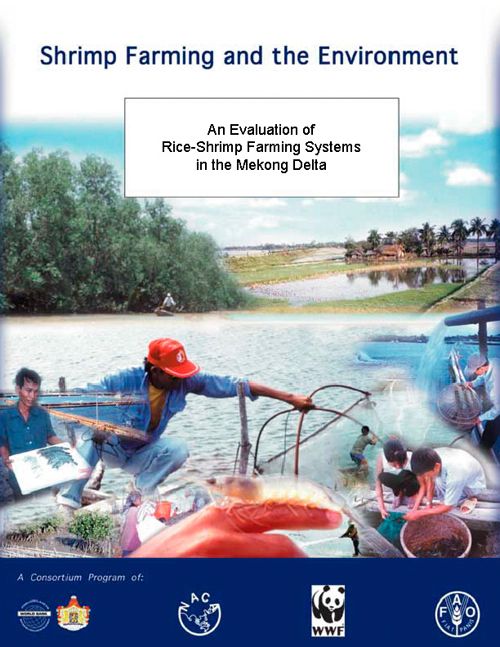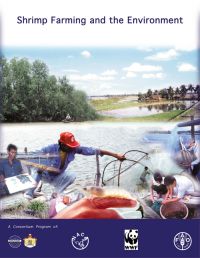An evaluation of rice-shrimp farming systems in the Mekong Delta
31 May 2005 | Donna Brennan, Nigel Preston, Helena Clayton and Tran Thanh Be | 2906 Downloads | .pdf | 418.99 KB | Better management practices, Shrimp, Environment and Sustainability, Vietnam
In the coastal areas of the Mekong Delta, many farmers have adopted the practice of rice-shrimp farming. The rice-shrimp cultivation area in the Mekong Delta in 2000 was around 40,000 ha with an estimated shrimp production of 10,000 MT and rice production of 100,000 MT. The areas used for rice-shrimp farming have traditionally been used for wet season agricultural crops, and do not impinge on mangroves. The shrimp farmed in this system are stocked at low densities and feed inputs to the ponds are low. The freshwater rice crop provides a buffer between the brackish water shrimp crops. The inundation of saline water during the dry season does not appear to lead to a long-term build up of salts in the soil, thus rice yield performance is not compromised in the rice-shrimp system. These characteristics of the rice-shrimp system avoid many of the negative impacts that can results from intensive shrimp farming. Thus, in common with other extensive systems, the rice-shrimp system appears to one of the more ecologically sustainable approaches to shrimp farming.
The integration of dry season shrimp farming into rice fields has raised incomes over several consecutive seasons for many farmers in the region. However, our survey and studies of the rice-shrimp system has revealed some key constraints that need to be addressed in order improve environmental and economic sustainability. The results of our study show that the traditional practice of recruiting native shrimp species through water exchange is not sustainable because of the attendant build-up of sedimentation on the farm. The more recently adopted system of stocking with hatchery-reared postlarvae, combined with low water exchange, is promising but limited by the availability of healthy postlarvae and episodic outbreaks of disease. However, even with currently poor survival rates, many farmers are managing their financial risks well because of the diversified nature of the rice-shrimp farming system.
The current lack of investment in technology for improved health screening and domesticated seedstock production techniques are critical constraints to the sustainability of the rice-shrimp system. We advocate that a potentially achievable environmental goal would be to develop and implement closed shrimp production system supplied with domesticated, high-health seedstock. This would significantly improve the prospects of securing a more economically sustainable future for rice-shrimp farmers in the Mekong Delta.
Copyright, all rights reserved.

